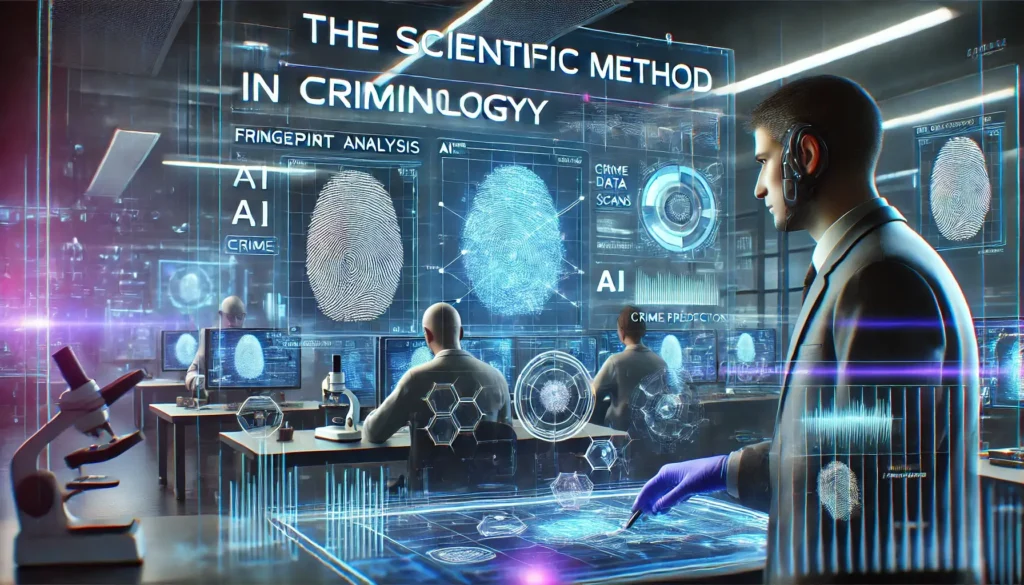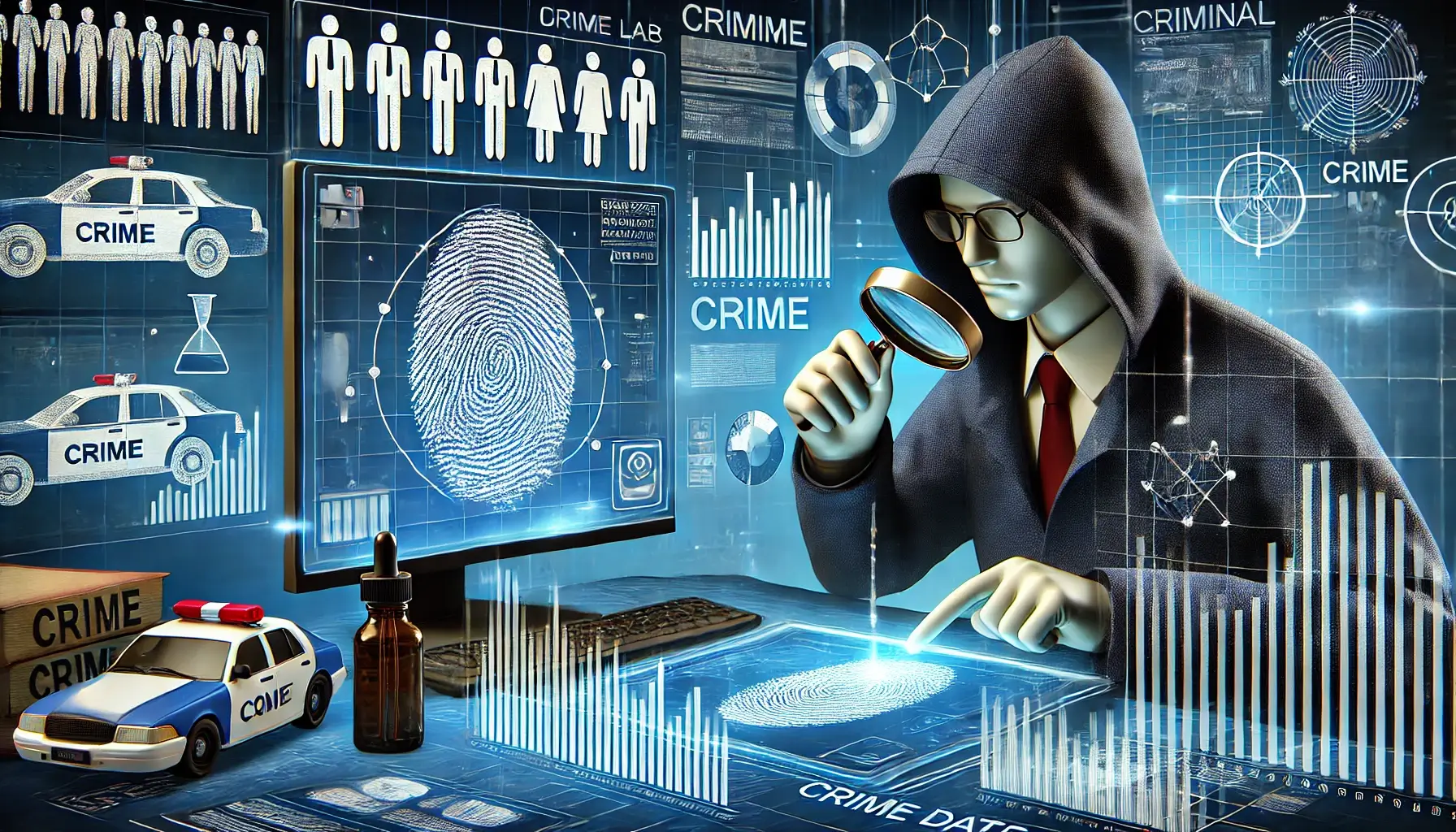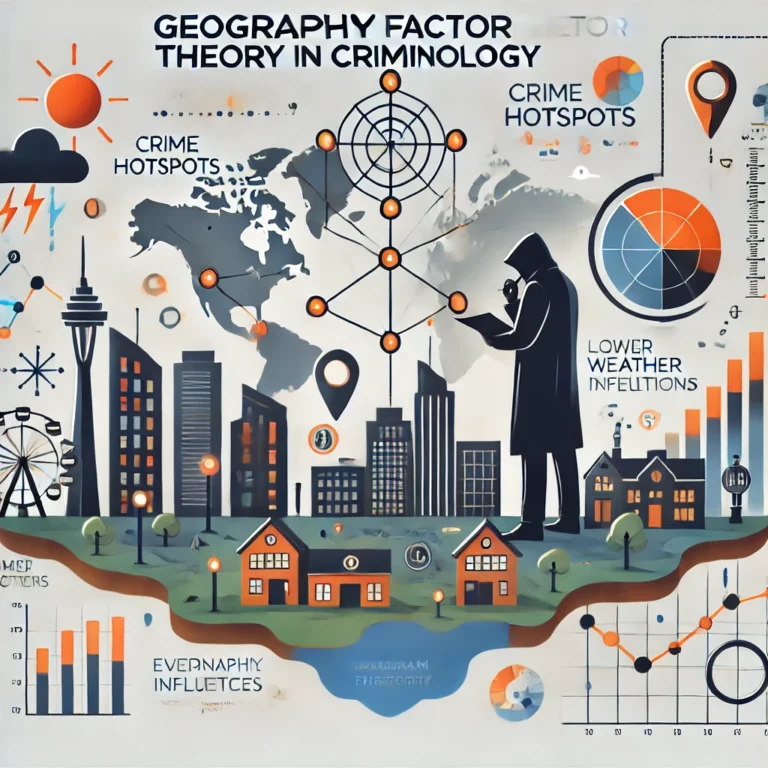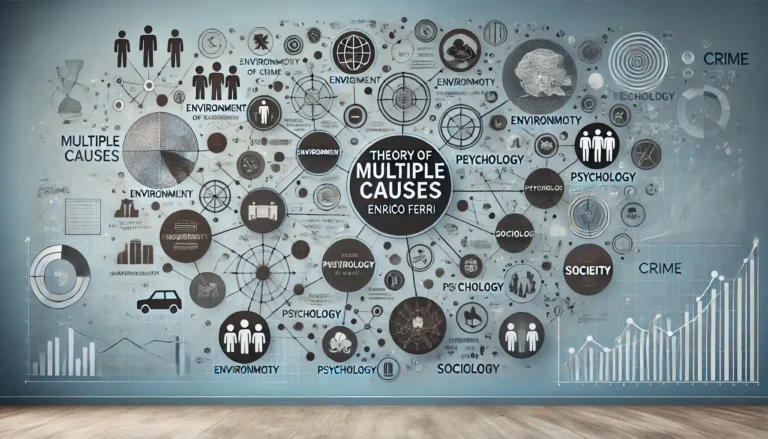The Scientific Method in Criminology: A Comprehensive Analysis
Introduction
Criminology, as a scientific discipline, aims to understand, explain, and prevent criminal behavior using systematic methodologies. The scientific method in criminology ensures objectivity, accuracy, and reproducibility in research. This article delves into how the scientific method is applied in criminology, exploring key concepts, research methodologies, and their implications in criminal studies.
Understanding the Scientific Method
The scientific method is a structured approach to research that involves observation, hypothesis formulation, experimentation, data analysis, and conclusion. In criminology, it plays a crucial role in evaluating criminal behavior, law enforcement strategies, and correctional policies.
Key Steps of the Scientific Method
- Observation – Identifying a phenomenon or trend in crime.
- Formulating a Hypothesis – Developing a testable explanation for criminal behavior.
- Experimentation and Data Collection – Gathering empirical data through qualitative and quantitative research.
- Analysis and Interpretation – Using statistical and theoretical frameworks to interpret findings.
- Conclusion and Theory Development – Validating or modifying the hypothesis based on results.
Application of the Scientific Method in Criminology
1. Observation and Crime Trends Analysis
Criminologists rely on crime statistics, victim surveys, and field observations to identify trends. Agencies like the FBI and UNODC provide extensive crime reports that help researchers pinpoint emerging patterns.
2. Hypothesis Formation in Criminology
Theories such as rational choice theory, strain theory, and social learning theory stem from hypotheses based on observed criminal behaviors.
3. Research Methods in Criminology
a. Quantitative Methods
- Surveys (National Crime Victimization Survey)
- Crime Mapping and Predictive Analytics
- Experimental Research (Randomized Controlled Trials in Criminal Justice)
- Longitudinal Studies (Tracking criminal behavior over time)
- Meta-Analyses (Comparing multiple criminological studies for trends)
b. Qualitative Methods
- Case Studies (Notorious criminal investigations)
- Ethnographic Studies (Gang cultures and organized crime)
- Interviews (Rehabilitated offenders)
- Observational Studies (Criminal behavior in different social settings)
- Content Analysis (Analyzing criminal motives in media and literature)
4. Data Analysis and Interpretation
Criminologists use SPSS, R, and AI-driven analytics to process crime data, identifying correlations between socioeconomic factors and crime rates. Machine learning algorithms also assist in predictive crime modeling and law enforcement decision-making.
5. Conclusion and Theory Development
Findings contribute to the refinement of existing theories or the creation of new criminological models, impacting law enforcement policies and judicial processes. By continuously testing and improving theories, criminologists develop more accurate crime prevention strategies.

Ethical Considerations in Criminological Research
- Confidentiality: Protecting participants’ identities.
- Informed Consent: Ensuring voluntary participation.
- Bias Avoidance: Maintaining objectivity in research.
- Ethical Experimentation: Ensuring that criminological studies do not cause harm to subjects.
- Cultural Sensitivity: Acknowledging how different societies define and react to crime.
The Role of Technology in Modern Criminology
Advancements in Artificial Intelligence (AI), Geographic Information Systems (GIS), and forensic science enhance the precision of crime studies and law enforcement strategies. AI assists in criminal profiling, GIS helps map crime hotspots, and forensic technologies improve evidence analysis in solving crimes.
Real-World Applications of the Scientific Method in Criminology
- Predictive Policing: Using AI and historical crime data to forecast criminal activities.
- Criminal Profiling: Utilizing psychological and behavioral analyses to identify suspects.
- Forensic Science: Applying DNA analysis, ballistics, and fingerprinting in investigations.
- Recidivism Studies: Analyzing patterns of repeat offenses to improve rehabilitation efforts.
- Cybercrime Analysis: Examining online fraud, hacking, and digital crimes through data analytics.
Future Directions in Criminological Research
- Integration of Neuroscience: Studying brain activity in criminal behavior.
- Use of Big Data Analytics: Processing massive crime-related datasets for deeper insights.
- Expanding Global Criminology Studies: Understanding crime across different cultures and legal systems.
- Ethical AI in Law Enforcement: Ensuring technology is used responsibly in crime prevention.

Conclusion
The scientific method remains the backbone of criminology, providing a structured approach to understanding crime and developing effective interventions. As technology and methodologies evolve, criminologists continue to refine their research approaches, ensuring a more comprehensive understanding of criminal behavior. The future of criminological research depends on ethical, data-driven, and interdisciplinary approaches that continue to enhance the criminal justice system.







